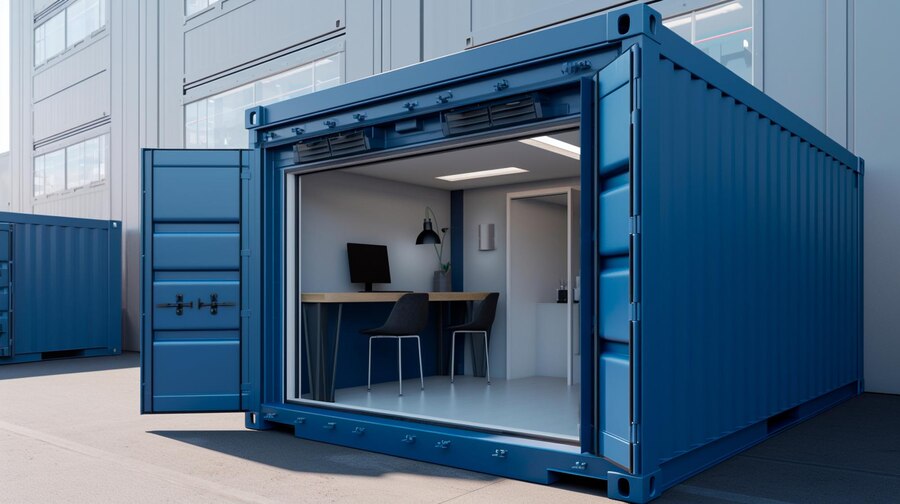On The Move: Selecting The Right Freight Services To Support Your Company’s Expansion

Embarking on growth, freight services stand as the lifeblood of your company’s journey. The seamless movement of goods across towns or continents forms the backbone of any expanding enterprise.
As your ambitions take shape, the reliability of your logistics takes center stage. Navigating freight services isn’t just a necessity—it’s a strategic imperative. Here are several tips on selecting the perfect freight services to fuel your company’s expansion.
Evaluating Your Expansion Needs
Before diving into the freight services world, take a step back and assess your expansion requirements. Consider factors such as the volume of goods, the distance they need to travel, the timeline of deliveries, and any special handling needs. You might utilize the services of a freight forwarder, like Cardinal Delivery, to help with your expansion plans.
Understanding these factors will lay the groundwork for choosing the right freight services that align with your unique business needs. A trucking firm offering different business options helps you save some time. You have to worry less about unnecessary stuff and focus on enhanced productivity of your business.
Technology Integration
The marriage of technology and global logistics has revolutionized the freight industry. Real-time tracking, route optimization, and seamless communication have become the norm. When selecting a freight service provider, delve into their technological capabilities. Can they offer you real-time visibility into your shipments? Do they utilize data to optimize routes and predict potential issues?
Embracing technology ensures a transparent and efficient supply chain, ultimately bolstering your expansion efforts. On transporting your consignment, you require access to real-time data about your products. From route information to live location- freight services must be integrated with technology to provide you with the best solutions.
Customization And Scalability
No two companies’ expansion journeys are alike. Your freight services should be tailored to accommodate your specific needs and future growth. Seek providers that offer customization and scalability, allowing you to adjust shipping solutions as your business evolves. The ability to adapt without disruptions is a hallmark of a freight service that truly supports your expansion goals.
The logistics and transportation industry must be flexible enough to make use of their expertise to cater to your requirements. You have to be mindful if they apply a one-size-fits-all approach, as every business has a different shipping requirement.
Sustainability Considerations
In an era of heightened environmental awareness, sustainability considerations are paramount. Opting for eco-friendly freight services aligns with corporate responsibility and regulatory trends. Explore green logistics prioritizing fuel efficiency, reducing carbon footprint, and responsible packaging. By selecting sustainable freight services, you contribute to a better world while enhancing your company’s reputation.
The next significant consideration is customer service. Look out for a company that keeps consumers as their top priority. Try to inspect whether they are true to their commitments towards the consumer. You can ask previous customers or check their online website to discover more about their portfolio.
Cost Efficiency And Value
While efficiency and reliability are essential, cost-effectiveness cannot be ignored. When evaluating freight service providers, consider the delicate balance between cost and value. Analyze how different services contribute to your bottom line. Compare quotes, delve into potential hidden charges, and consider the long-term savings of efficient logistics.
A strategic approach to cost management ensures that your expansion remains financially sustainable. You might be the firm for a quotation from multiple moving industries. Later, create a list of all trucking firms that are affordable for you and enquire about their payment policy. This will help you discover an inexpensive freight service.
Communication Flow
A lot of us do not consider how the logistics and trucking providers operate and how they communicate with their workers. Communication flow within the business perimeter is an important thing to consider when hiring a freight service.
It is significant to ensure that they possess an ideal company culture as well as communication as it impacts your business. Due to a great culture, you can continue maintaining your relationship with the particular agency for a prolonged period of time.
Types Of Freight Services
The freight industry offers a range of services tailored to different shipping requirements. FTL or Full Truckload, air freight, ocean freight, Less Than Truckload (LTL), and intermodal options are available. FTL suits large shipments, while LTL optimizes smaller loads. Air freight offers speed, and ocean freight accommodates international shipments.
Intermodal combines different modes for cost-efficient, long-distance transport. Each service has distinct benefits, and understanding when to leverage them will significantly impact your expansion strategy.
Industrial Expertise
You must always opt for an industry that is proficient in every type of transportation. They must be skillful enough to tackle all your queries associated with transportation and logistics. For example, if you need domestic freight solutions at full truckload, then the transport company must have the necessary expertise.
It is indispensable for a freight firm to possess necessary data on all kinds of transportation, internationally or domestically. They should be able to exhibit awareness about state-of-the-art technology and transport practices. Your choice of outsourcing your transport needs must allow your team to indulge in revenue-generating activities.
Transparency
Finally, the trucking industry must be transparent enough. When it comes to inquiring about their pricing details along with the services, always opt for an industry that is transparent in communications.
Their representative must be open to answer all your queries- be it small or big. Additionally, they should be able to provide information that might not be directly related to freight services.
Expert Partner Selection
Choosing a freight service provider is more than a transaction—it’s about forming a strategic partnership. Look for expertise, industry reputation, customer service, and responsiveness. A reliable partner will be invested in your success, offering insights and solutions beyond the shipping process.
Building a strong relationship with your freight service provider contributes to the seamless execution of your expansion plans. So, what is taking you back? With the right tips by your side, getting a trustworthy freight partner should no longer be a constraint.
Read Also:














